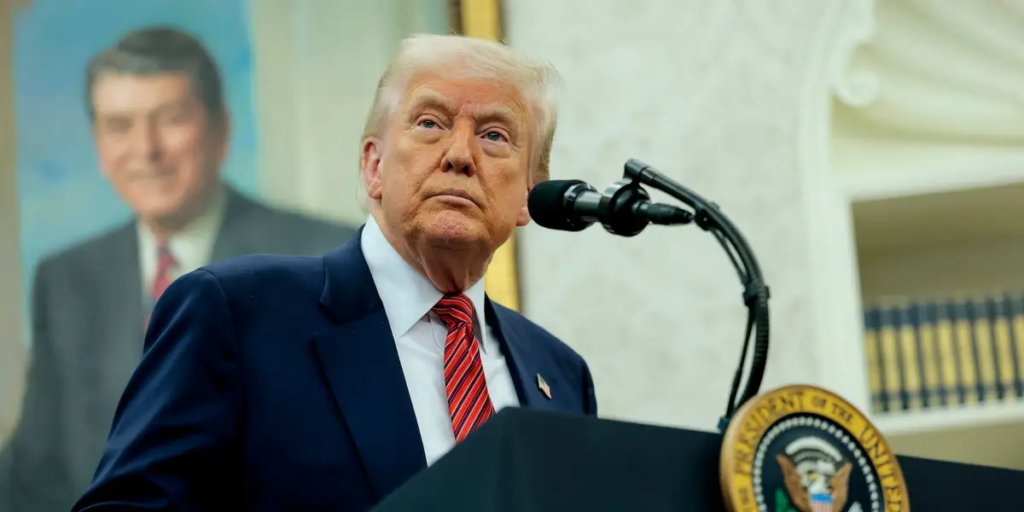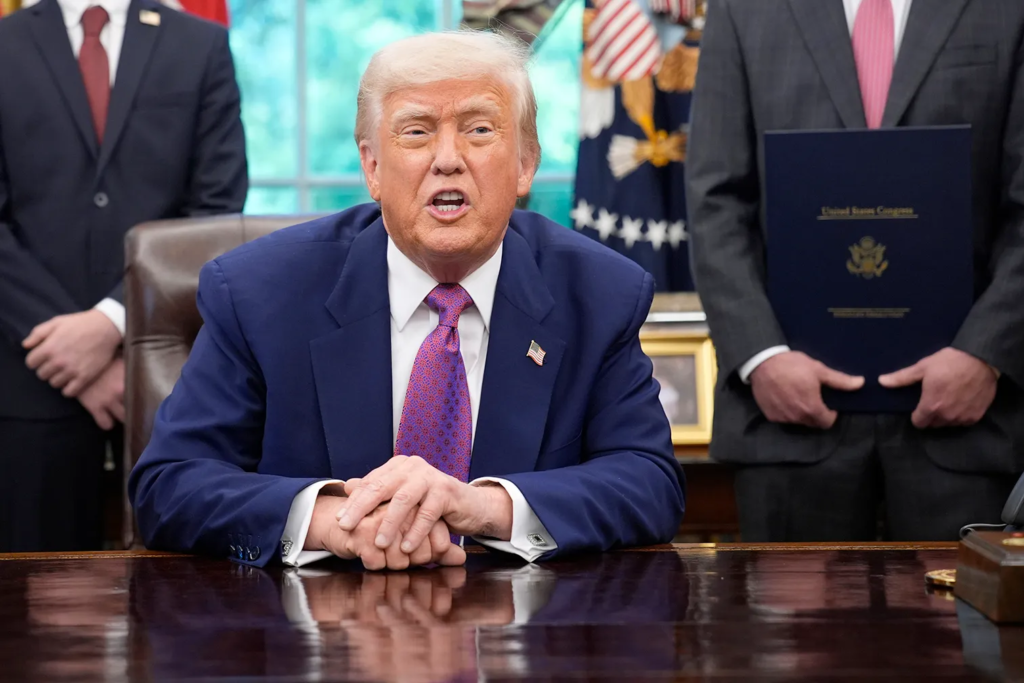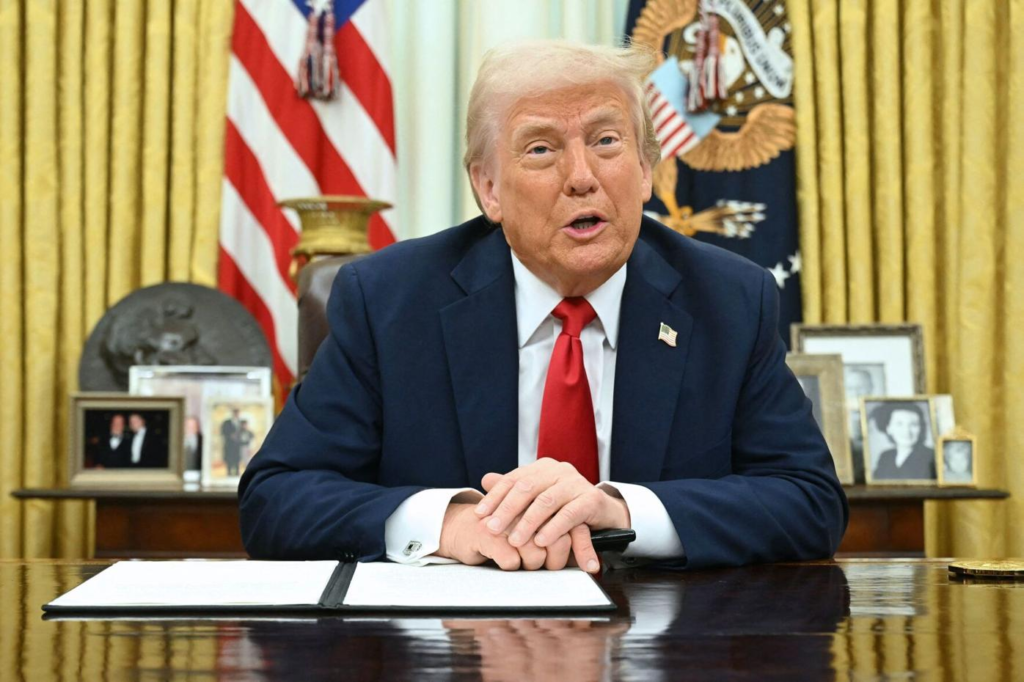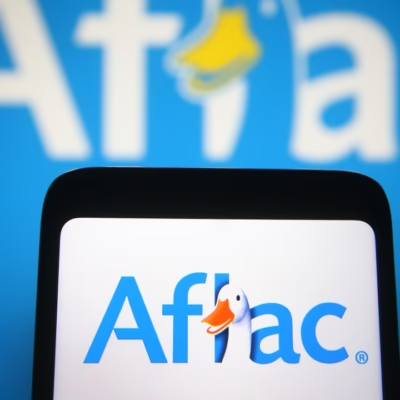In a bold move to tackle soaring prescription drug prices, President Donald Trump signed a sweeping executive order on May 12, 2025, setting a 30-day deadline for drugmakers to negotiate lower prices. The order aims to align U.S. drug costs with those in other developed countries, promising significant relief for American consumers burdened by high medication expenses. This action marks a renewed push to address a long-standing issue that has frustrated millions, with Trump vowing to bring “fairness” to the U.S. healthcare system.

A Game-Changing Executive Order
The executive order, signed during a White House press conference, directs the Department of Health and Human Services (HHS), led by Robert F. Kennedy Jr., to work with pharmaceutical companies to establish new price targets within 30 days. If drugmakers fail to comply, the order outlines a plan to enforce a “Most Favored Nation” policy, tying U.S. drug prices to the lowest prices paid by other comparable nations, such as those in Europe.
Trump emphasized the urgency of the issue, stating, “We’re going to equalize. We’re all going to pay the same. We’re going to pay what Europe pays.” He highlighted the disparity in drug pricing, noting that Americans often pay two to three times more for the same medications manufactured in the same facilities as those sold abroad. The president’s goal is to reduce prescription drug costs by 30% to 80%, a promise he claims could save “trillions of dollars” for taxpayers and consumers.

Why Drug Prices Matter
High prescription drug costs have been a persistent concern for Americans across political divides. According to a 2024 report by the nonprofit research organization Rand, the average cost of prescription drugs in the U.S. is 2.78 times higher than in 33 other countries, with brand-name medications costing over four times more. For many, these prices translate into tough choices—whether to fill a prescription or pay for groceries, rent, or other essentials.
The federal government spends hundreds of billions annually on medications through Medicare, which covers nearly 70 million older Americans, and Medicaid, which serves about 80 million low-income and disabled individuals. These programs bear the brunt of inflated drug prices, passing costs onto taxpayers. Meanwhile, millions of Americans with private insurance face high out-of-pocket expenses, as the government has limited authority to regulate prices in the commercial market.
Trump’s executive order seeks to address this imbalance, particularly for Medicare and Medicaid, where the government has more leverage to negotiate prices. However, the order’s impact on privately insured Americans remains uncertain, as federal authority over commercial markets is limited.

The “Most Favored Nation” Approach
The cornerstone of Trump’s plan is the “Most Favored Nation” policy, which would cap U.S. drug prices at the lowest rates paid by other developed nations. This approach is not new—Trump attempted a similar policy during his first term in 2020, targeting Medicare Part B drugs administered in doctors’ offices. However, that order faced legal challenges from the pharmaceutical industry and was later rescinded by the Biden administration.
This time, the executive order is broader, aiming to cover drugs under Medicare, Medicaid, and potentially private insurance. It also includes measures to facilitate direct-to-consumer sales, bypassing intermediaries like pharmacy benefit managers (PBMs), whom Trump criticized as “middlemen” driving up costs. Additionally, the order encourages drug importation from countries like Canada and pushes for greater transparency in PBM fee structures.
Challenges and Industry Pushback
While the executive order has sparked hope among consumers, it faces significant hurdles. The pharmaceutical industry, represented by groups like the Pharmaceutical Research and Manufacturers of America (PhRMA), has already pushed back, calling the plan a “bad deal” for patients. Industry leaders argue that price controls could stifle innovation and limit the development of new drugs, as profits fund research and development.
Legal experts also question the order’s enforceability, particularly in the private market. Andrew Mulcahy, a health economist at Rand, noted that while the government can influence Medicare and Medicaid pricing, regulating commercial markets or forcing foreign governments to adjust their pricing policies is far more complex. “It’s much easier for the government to muck around in Medicare and Medicaid than in the commercial market or directly in the supply chain,” Mulcahy said.
The 30-day deadline adds another layer of complexity. Negotiating new prices for thousands of drugs in such a short timeframe is a daunting task, and the order’s reliance on voluntary compliance from drugmakers may limit its immediate impact. If negotiations fail, the HHS is tasked with drafting new regulations, a process that could take months or even years and may face court challenges.
Political Support and Criticism
The executive order has garnered bipartisan attention, with both Republicans and Democrats acknowledging the need to address high drug prices. U.S. Senator Peter Welch, a Democrat, praised the intent, stating, “There is no reason pharmaceutical companies should charge American patients more than what they charge in other countries.” He urged Trump to support bipartisan legislation, like the Fair Prescription Drug Prices for Americans Act, to create lasting change.
However, others, like Senator Bernie Sanders, expressed skepticism, arguing that the order is likely to be struck down in court without congressional backing. “If Trump is serious about making real change, he will support legislation to make sure we pay no more for prescription drugs than people in other major countries,” Sanders said.
What’s Next for Consumers?
While Trump’s promise of “almost immediate” price reductions has raised expectations, experts caution that significant savings may take time. The order sets a 30-day period for HHS to propose price targets, followed by an unspecified period to assess progress. If drugmakers don’t comply, rulemaking to enforce “Most Favored Nation” pricing could delay implementation further.
For now, the Biden-era Inflation Reduction Act remains a key player in drug pricing reform. The law, passed in 2022, allows Medicare to negotiate prices for select high-cost drugs, with savings set to begin in 2026. The Trump administration is currently negotiating prices for a second batch of 15 drugs, including popular medications like Ozempic, with results expected in 2027.
Consumers may also see indirect effects from the order’s push for drug importation and transparency in PBM practices. However, potential tariffs on pharmaceutical imports, proposed by the Trump administration, could complicate efforts to lower costs and risk drug shortages.
A Step Toward Fairness?
Trump’s executive order is a high-stakes gamble to deliver on a campaign promise to ease the financial burden of prescription drugs. By setting an ambitious 30-day deadline and reviving the “Most Favored Nation” policy, the administration is signaling a commitment to shaking up the pharmaceutical industry. Yet, the path to lower prices is fraught with legal, logistical, and political challenges.
For millions of Americans struggling to afford life-saving medications, the order offers a glimmer of hope. Whether it will deliver the promised 30% to 80% price cuts remains to be seen, but the conversation around drug affordability is once again at the forefront of national policy. As the 30-day clock ticks, all eyes will be on the negotiations—and the potential for real change in the cost of healthcare.
Must Read :- Jayden Daniels Shines as a Potential Star for 2028 Olympic Flag Football





